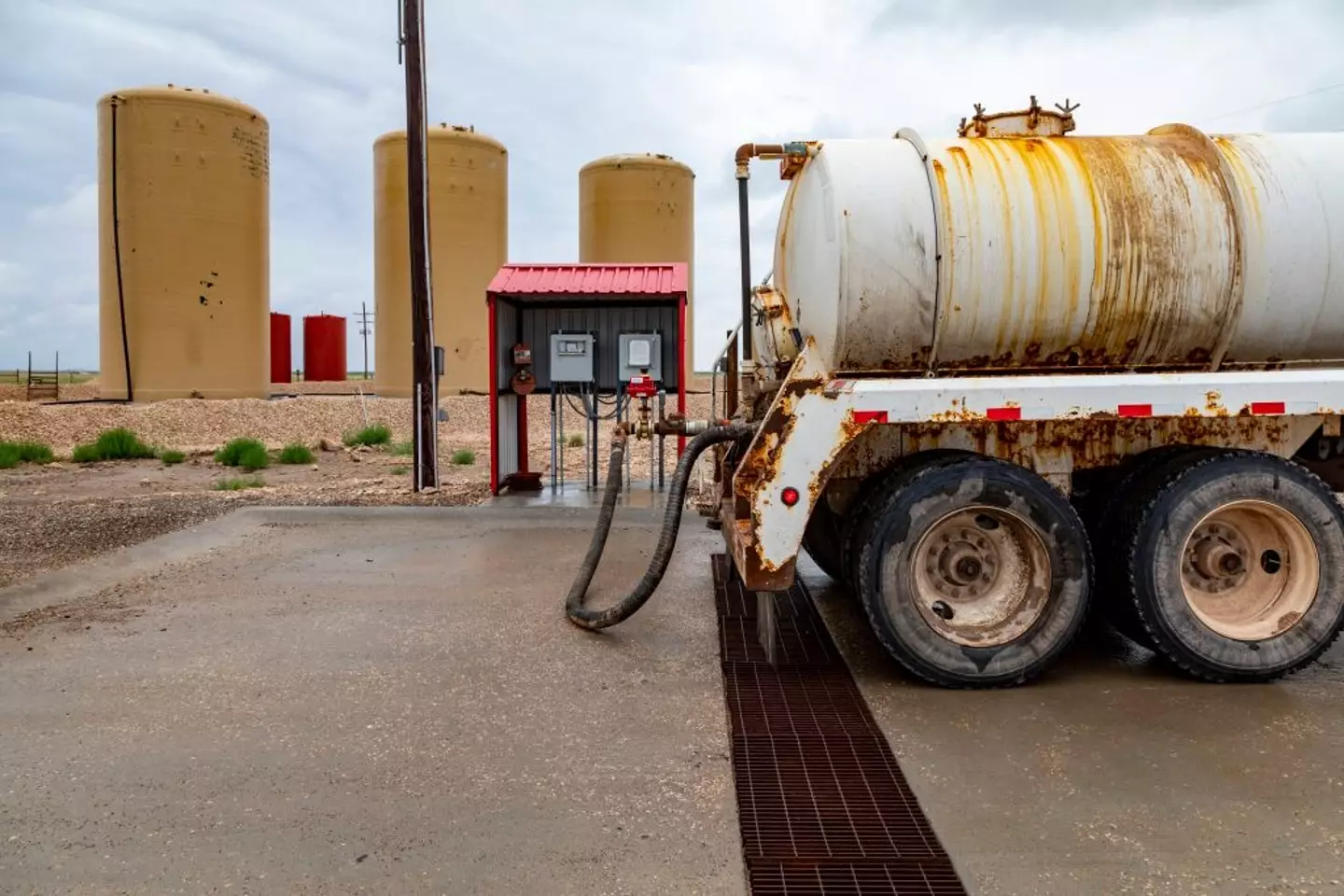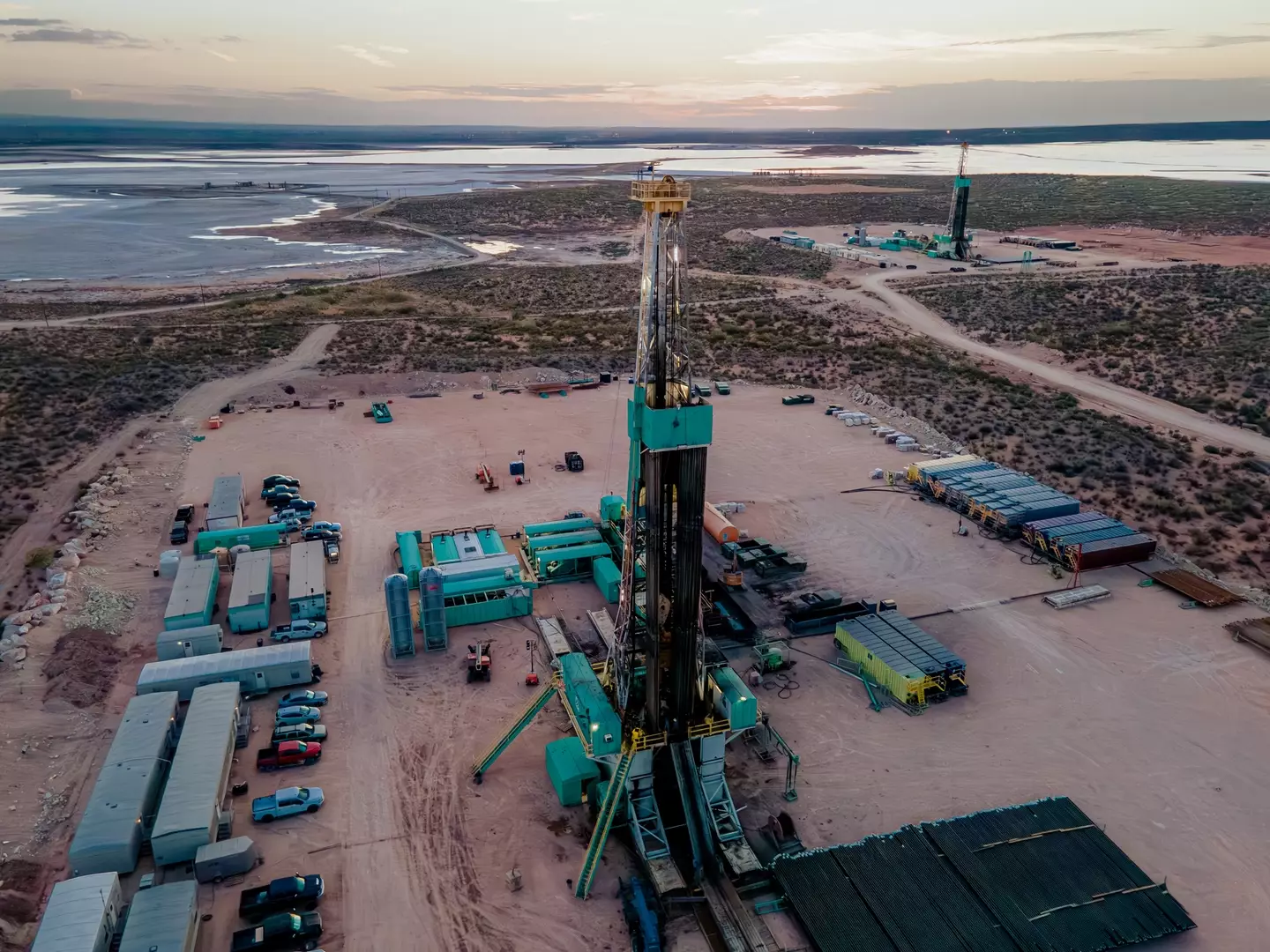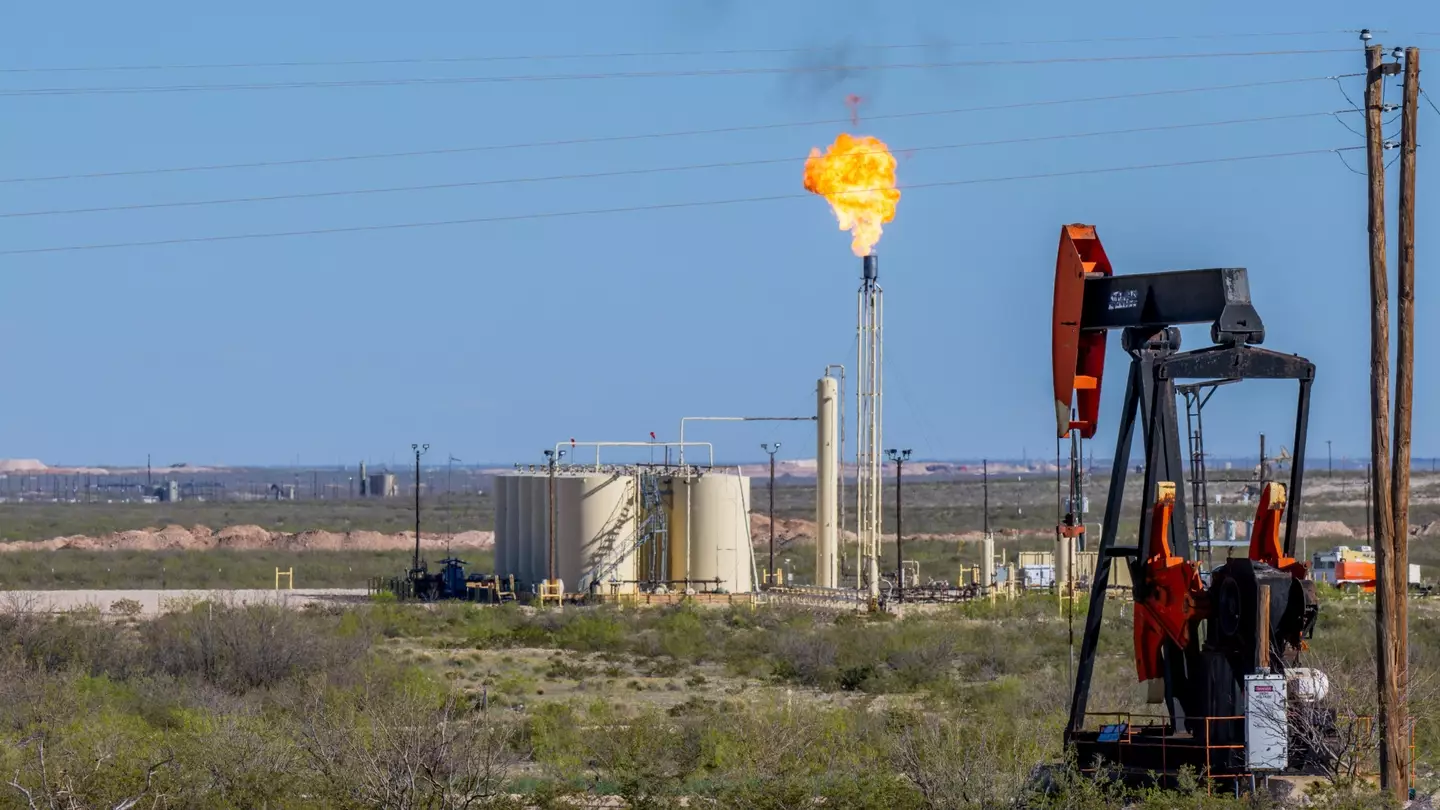One of the most significant oil-producing regions in the United States could be creating substantial risks for the country.
The Permian Basin, which spans West Texas and southeastern New Mexico, measures approximately 250 miles in width and 300 miles in length.
This area, known as the world’s largest and most productive fracking basin, is composed of layers of shale, sandstone, carbonate rock, and ancient oil and gas reservoirs.
According to the 2024 Economic Report from the Permian Strategic Partnership, it was projected to generate $350 billion in gross product and create about 1.2 million jobs for the US economy by 2050.
However, for each barrel of crude oil produced, up to five barrels of toxic wastewater are generated, which are disposed of by underground injection.
Bloomberg reports that this amounts to roughly 16 million barrels per day, with projections for a 39 percent increase by 2035.
The practice of injecting toxic brine water deep beneath the surface has already resulted in concerning environmental consequences.

This has included three earthquakes with magnitudes ranging from 5.0 to 5.4 in the Permian region between 2020 and 2023.
Efforts to use shallower injections to prevent seismic activity have presented another challenge.
These shallower injections can result in toxic water blowouts, similar to geysers, propelling the salty, hazardous waters up to 100 feet into the air from old wells, often referred to as zombie wells.
Such practices can also cause ground deformation.
The saltwater is harmful due to its extreme salinity, toxic heavy metals, carcinogenic chemicals, and radioactive elements such as radium.
In June of this year, the Railroad Commission, responsible for regulating the oil and gas industry, tightened shallow-well permits and acknowledged reservoir limitations and risks to both oil production and freshwater resources.

But what additional threats does this brine water pose?
There is concern about the contamination of groundwater affecting numerous towns and rural communities, jeopardizing the health of residents.
This could lead to the loss of access to safe drinking water, rendering wells unusable.
The chronic ingestion of low-level radionuclides, particularly radium, is associated with bone cancer, leukemia, and other types of cancer.
Workers exposed to the wastewater are also at an elevated risk of developing cancers such as bone, leukemia, and lung cancer, as well as kidney disease, with unborn babies potentially facing a higher risk of congenital issues.
Additionally, environmental damage could occur; rivers, creeks, and fields may end up carrying radioactive and toxic wastes, damaging ecosystems, wildlife, crops, and ranches, and potentially affecting livestock as well.

